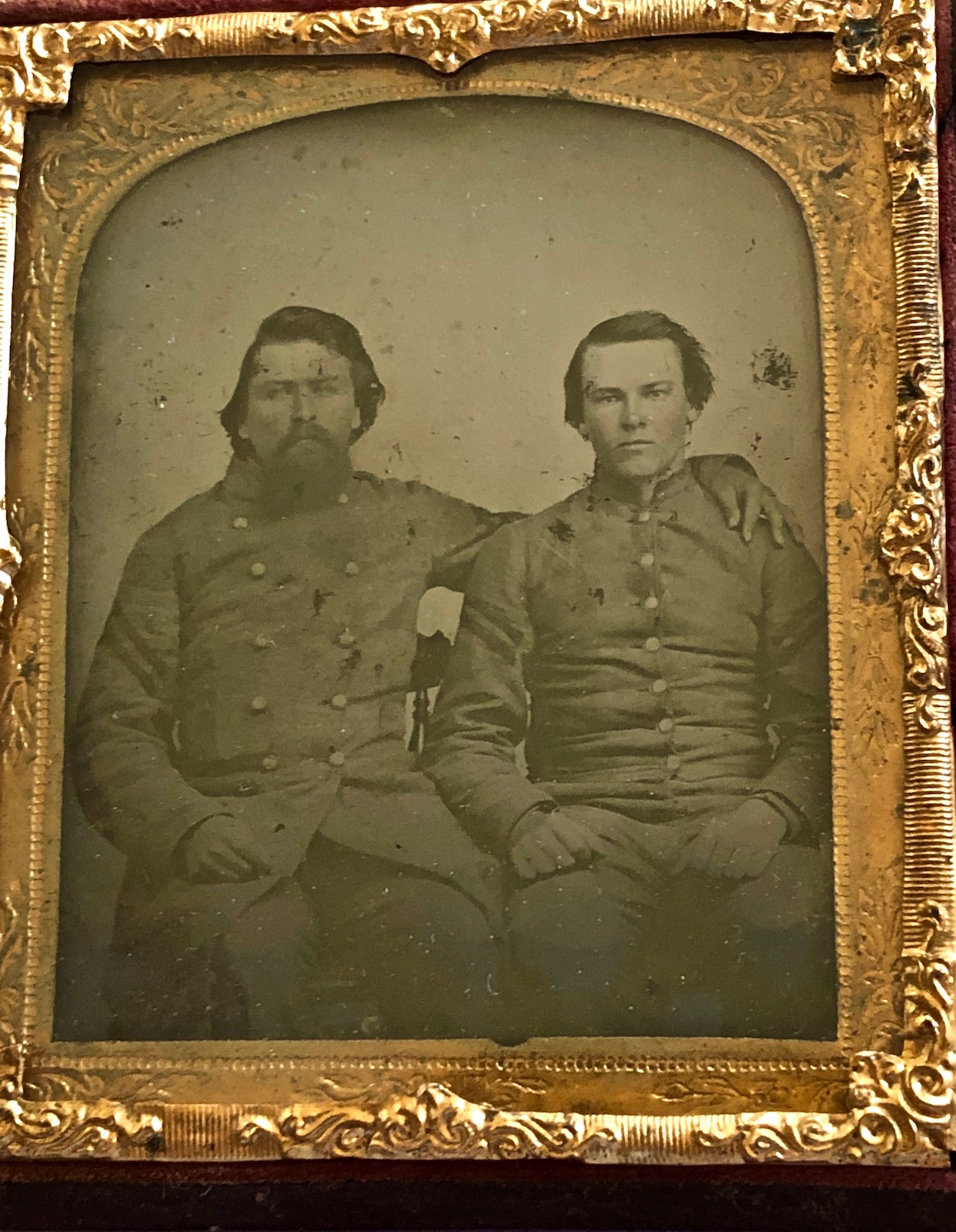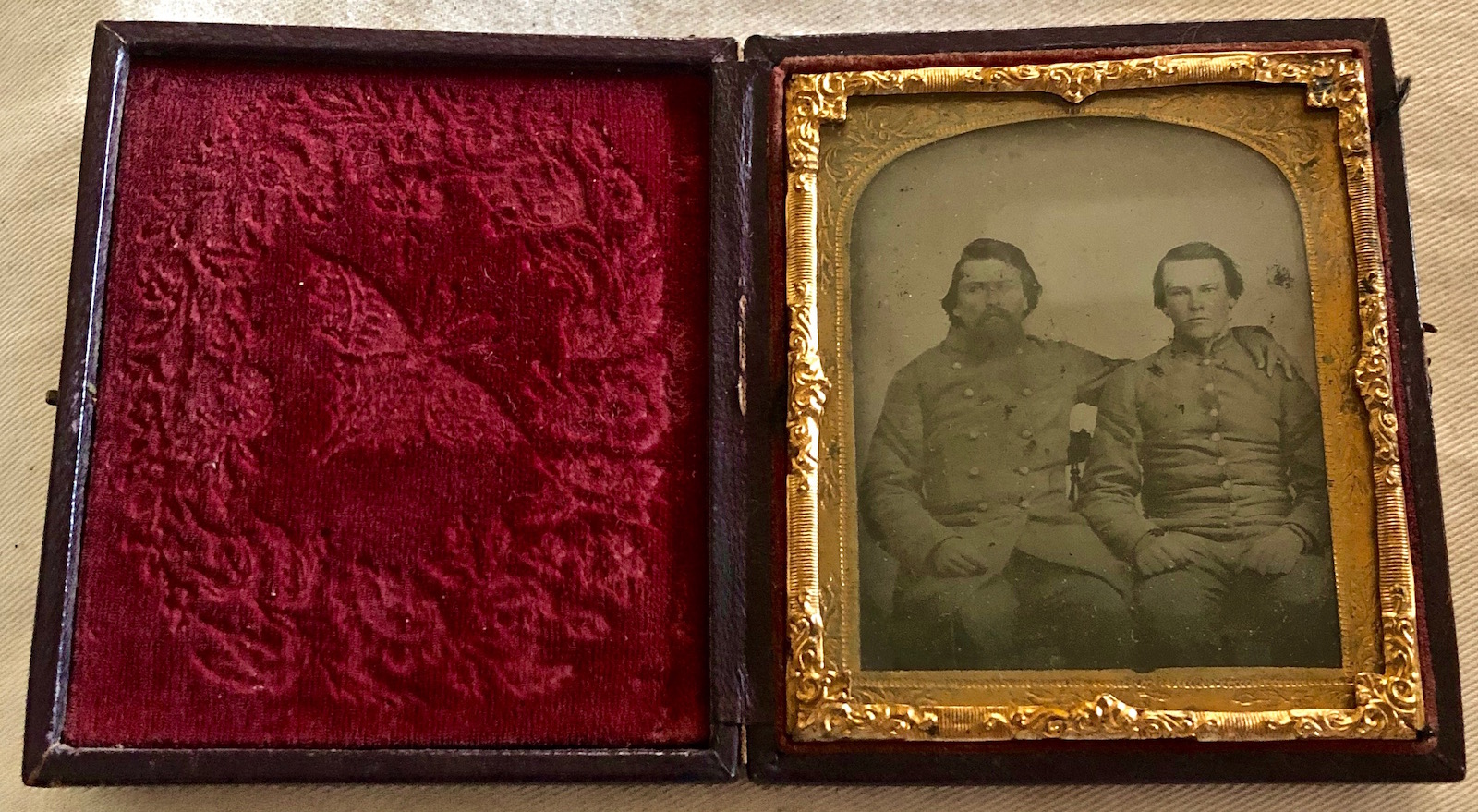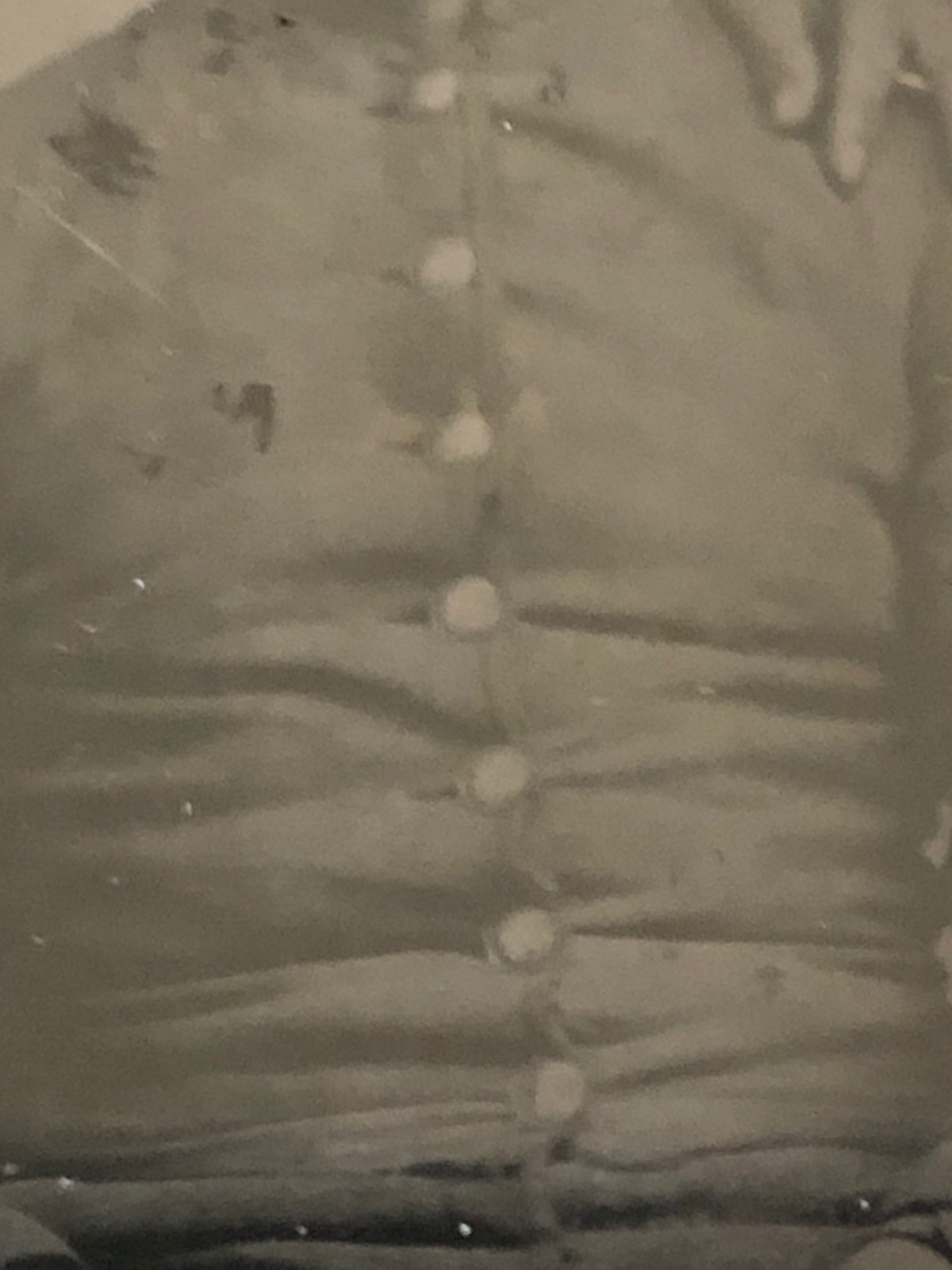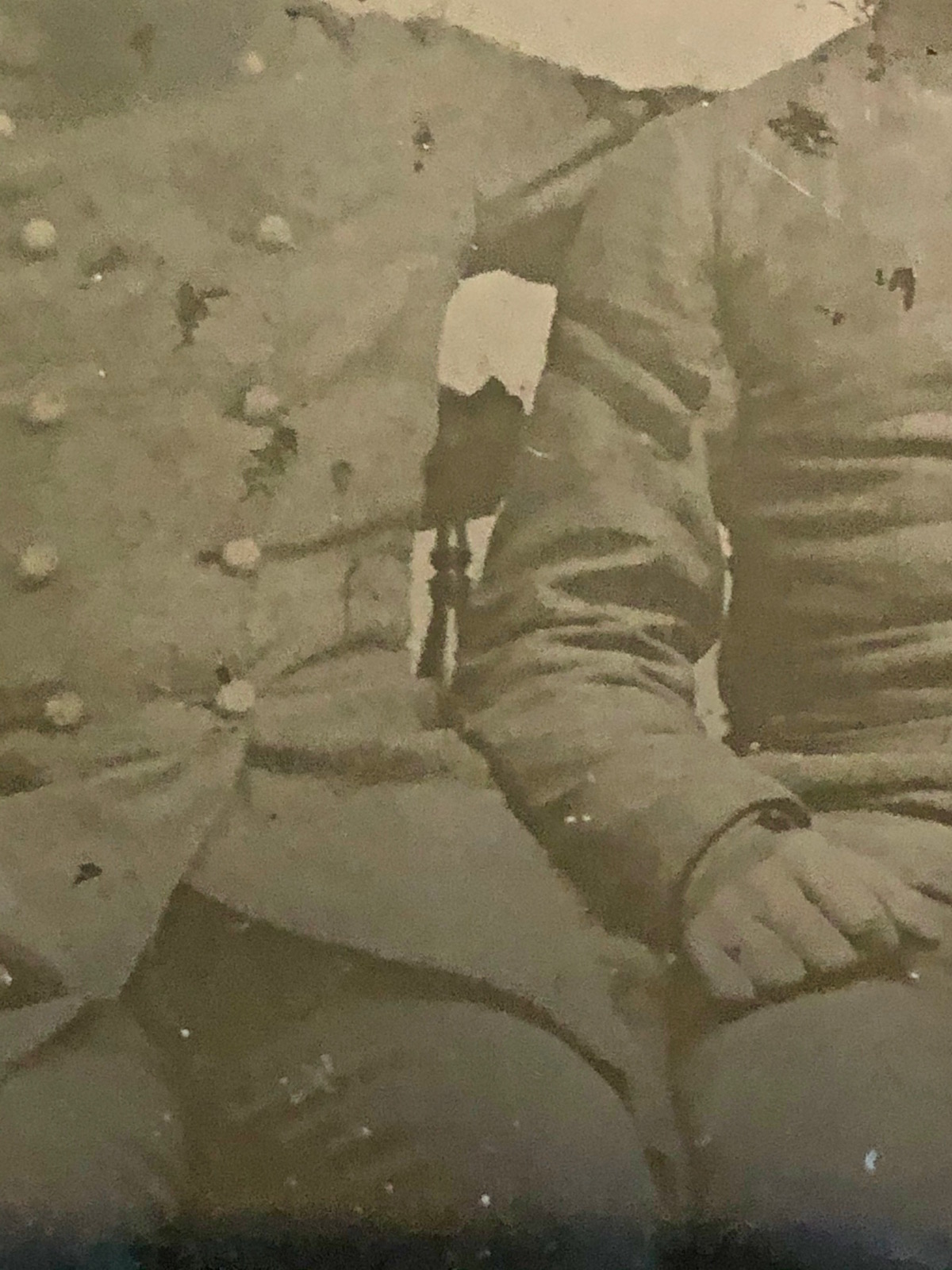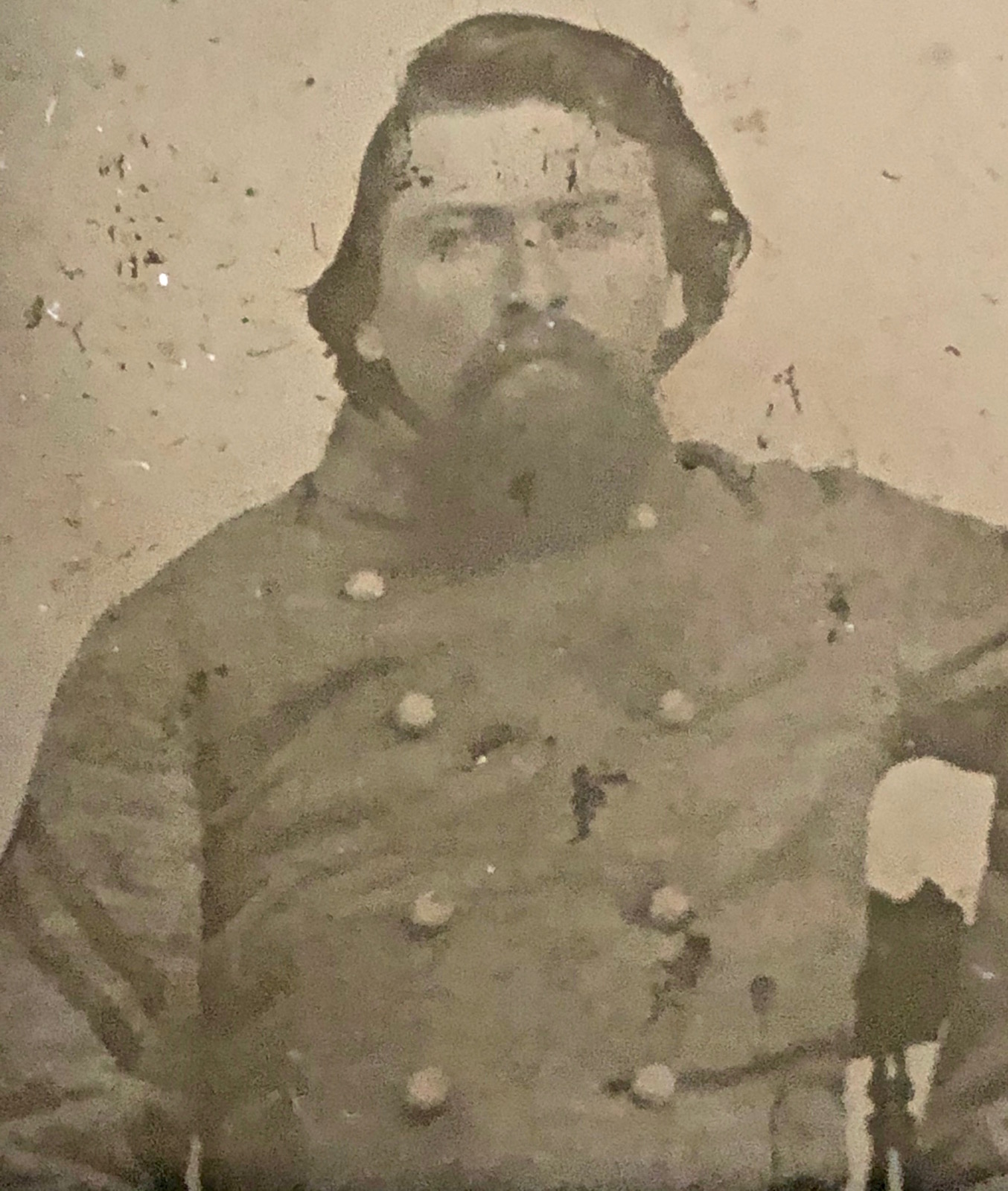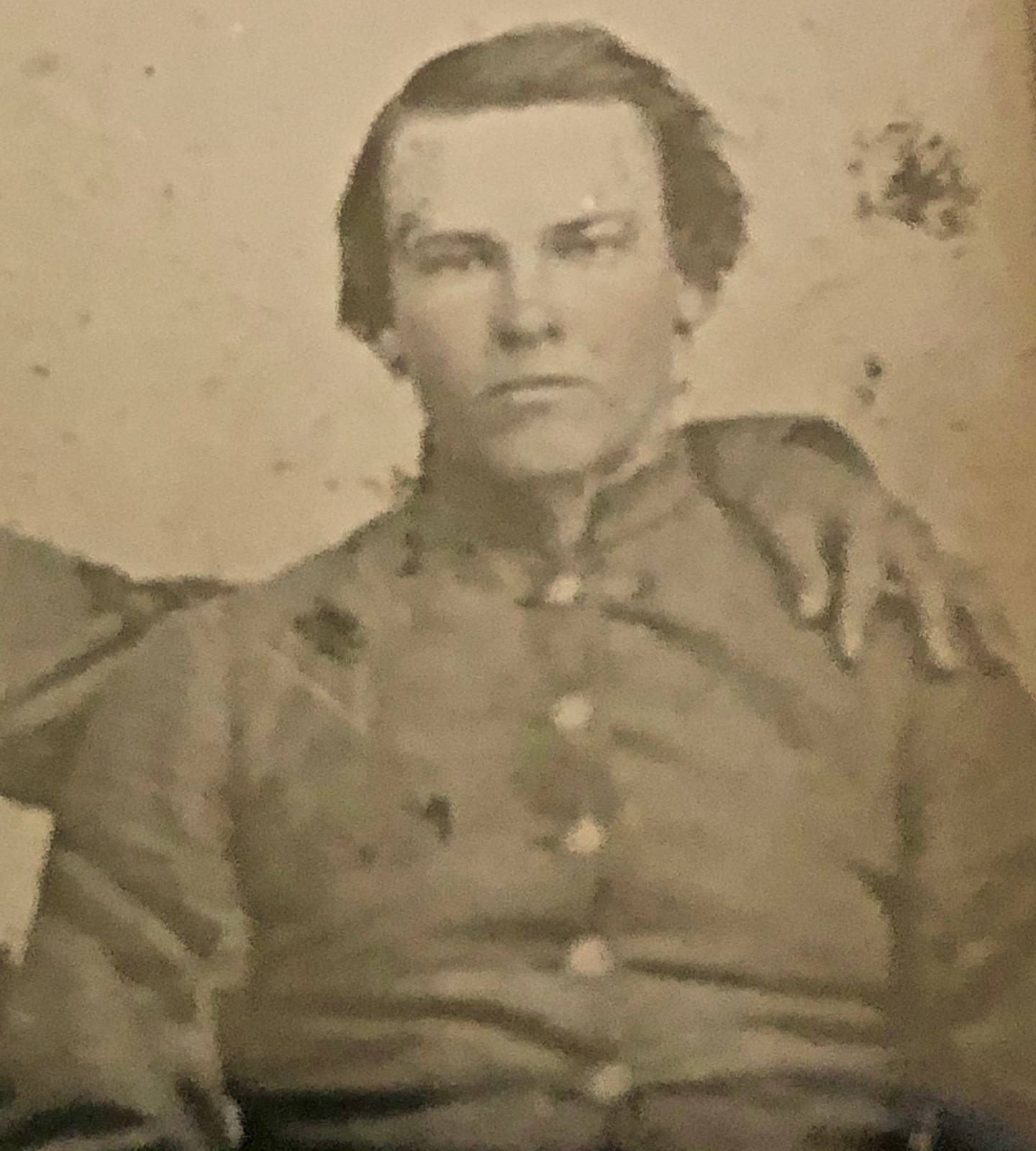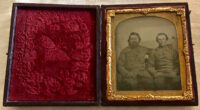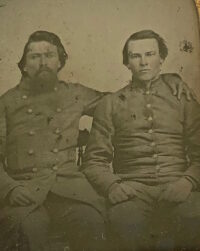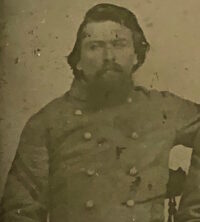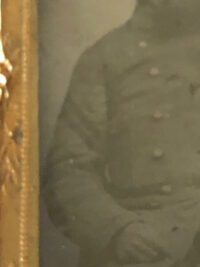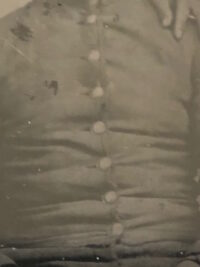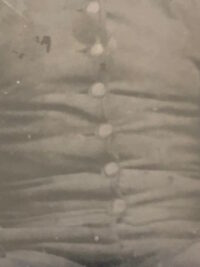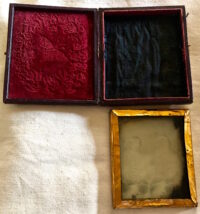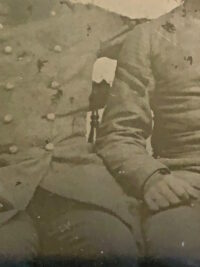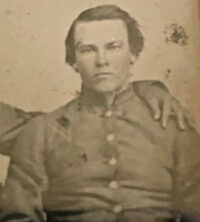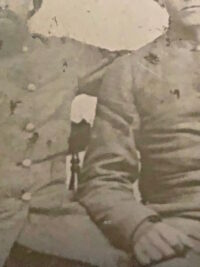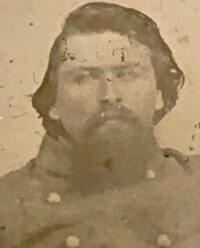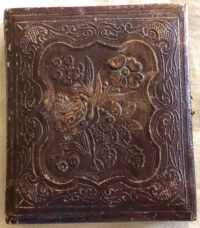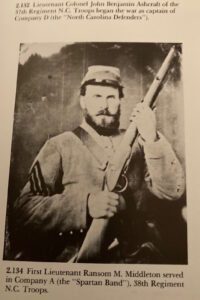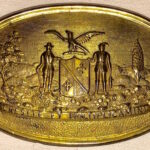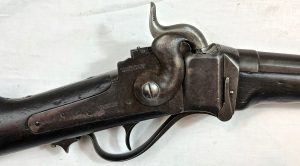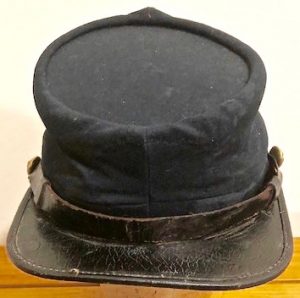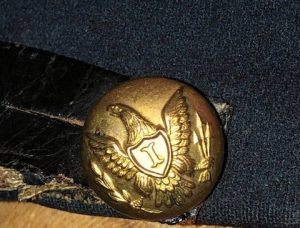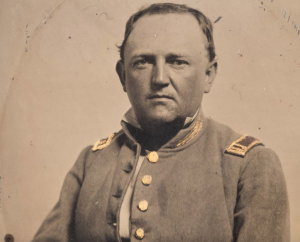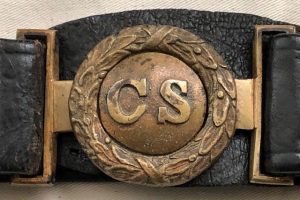Sixth Plate Ambrotype in Full Case – Two North Carolina Confederate Corporals
SOLD
Sixth Plate Ambrotype in Full Case – Two North Carolina Confederate Corporals – This ambro is in overall very good condition; very little, original black lacquer remains on the reverse of the image, but this is completely compensated by the placement of a black cotton rectangle behind the image, allowing a fine and resolved image to be seen. Both soldiers wear corporal chevrons; interestingly, the apex of both pairs of chevrons are pointed upward, unlike most Civil War period rank chevrons. We have seen this on a rare occasion; we show in our accompanying, supportive pictures a photograph from Greg Mast’s seminal work on North Carolina images (“State Troops and Volunteers: A Photographic Record of North Carolina’s Civil War Soldiers”), depicting a NC soldier with the same configured chevrons. One of the corporals in our image wears a double-breasted coat, while the other corporal is wearing a single-breasted jacket. Pictured in the image, between the two soldiers, is a period chair; this same chair seemingly appears in some of the images in Mast’s book, perhaps indicating that the two soldiers are indeed North Carolina Confederates. The set of buttons on the single breasted jacket are two-piece, perhaps NC State Seal buttons; the buttons on the double-breasted coat appear to be three-piece, state seal buttons. The image is housed in a full, leatherette, original case; this is a great, seemingly North Carolina, Confederate image.
Fred Taylor, NC images expert, has indicated that he believes this image was taken in the Wilmington area by an itinerant photographer or in a small studio, of a local photographer, in the early war period, perhaps, 1862. Another long time, respected image collector contacted us and definitely agrees that the same chair seen in this image, is seemingly the same chair seen in the image of William Drew, 2nd NC Artillery or Brunswick Artillery; Drew enlisted in early 1862, was promoted to Sergeant in March ’62, then Lieutenant, in October. An educated guess would be that Drew’s image was taken during that six month period, in 1862, since he is depicted with Sergeant’s stripes. At that time, his company was stationed at Fort French (also listed sometimes as Camp French), which was located about two miles south of Wilmington, on Cape Fear. In all likelihood, Drew was photographed either by an itinerant photographer who visited Camp French, or that Drew visited nearby Wilmington and had his image created. There is an identified Wilmington photographer during the War, but it is not possible to say that this is the same chair as seen in our image or that this is his work, but there are enough distinct similarities, to allow some date and location assumptions. There were other photographers roaming around the Cape Fear/Wilmington region at that time, so we feel that the photographer in question was, in all likelihood, an itinerant artist.
The two corporals in our image, most likely were part of one of the Infantry or Artillery groups stationed in the Wilmington area, early in the War; their uniforms are indicative of early War attire, as they are not regulation, and most likely locally produced by their company of service. It is indeed rare to see the inverted chevrons (also not regulation), but not unheard of either.


